Rosetta catches its own shadow
- Published
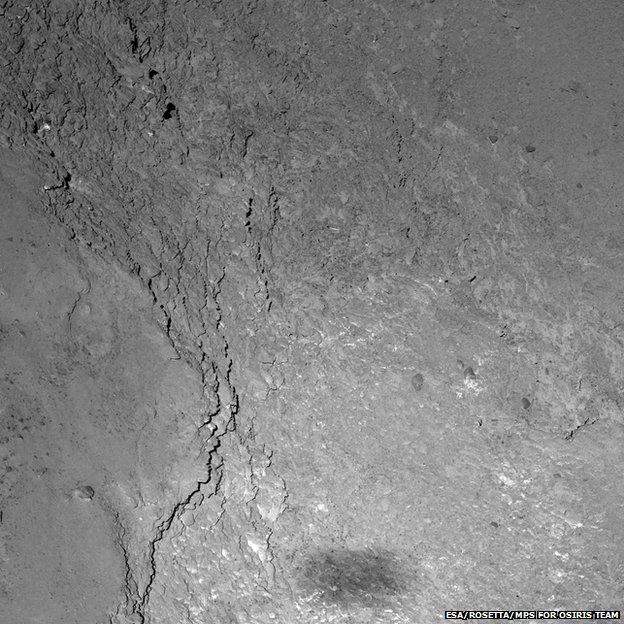
Rosetta catches its own shadow (at bottom) while sweeping just 6km above the surface of 67P
The highest resolution image yet taken of Comet 67P by the Rosetta satellite has just been released.
It was acquired during the Valentine's Day flyby when the European Space Agency probe passed a mere 6km from the surface of the "icy dirtball".
The view, which shows the detail in features down to 11cm, is of a region on the bottom of the "space duck".
With the Sun directly behind Rosetta, it is even possible to see a shadow of the satellite itself on the surface.
"I like it because you get this nice juxtaposition of Rosetta against the alien landscape," said Dr Matt Taylor, the mission's project scientist.
The precise location of the image has been worked out to be on the boundary of two regions known as Imhotep and Ash.
67P is now getting more and more active as it moves closer to the Sun, meaning it is no longer possible for the European probe to work continuously at close-quarters, as was the case through the back end of last year.
The stream of gas and dust coming away from the comet produces drag on the spacecraft, complicating the job of the controllers who must drive Rosetta through space.
The plan instead is to sit back from 67P and make the occasional close-in approach. The 14 February pass was just such a manoeuvre.
It swept Rosetta in over the larger of the two lobes that make up the rubber duck-shaped comet.

This took the probe through the "zero phase" angle. That is, with the Sun positioned exactly behind the spacecraft.
While perfect for casting a shadow of Rosetta itself on to the surface, it does mean that the terrain looks somewhat flatter in the new image than it really is. If side-lit, the surface would appear much craggier.
Nonetheless, scientists would have been able to track the progression of the shadows during the course of the flyby, and that will have given them some new insights on the nature of the dusty surface materials.
It would have been a good check, for example, on 67P's precise reflectance properties - its so-called albedo.
In general terms, this is about 6%. In other words, only 6% of the incident light is thrown back into space.
Rosetta's instruments would also have taken the opportunity to taste or sniff the innermost parts of the comet's atmosphere, or coma.
67P is currently 328 million km from the Sun, arcing inwards at a relative speed of 23km/s (83,000km/h).
Its closest approach to our star will occur in mid-August when it will be at a distance of 186 million km.
By that stage, the warmth of the Sun will be vaporising 67P's ices at a rapid pace, and Rosetta will likely have to retreat several hundred km.
The difficulties of operating close in were illustrated neatly in the Valentine's Day flyby.
The density of particles in the coma resulted in Rosetta losing sight of the stars it uses for navigation.
This situation came very close to tipping the satellite into a "safe mode" that would have switched off all of the science instruments, ruining the data-gathering opportunity.
"We have some lessons learned which we will have to apply to future flybys," Dr Taylor told BBC News.
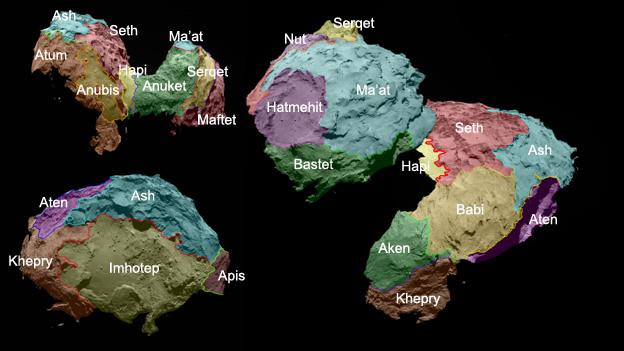
Where are Imhotep and Ash? The comet's surface has 19 regions named after Ancient Egyptian deities

Navcam from 14 February: Imhotep has a mixture of very flat and very rough terrain

Rosetta very nearly tripped into a safe mode as it made its close pass
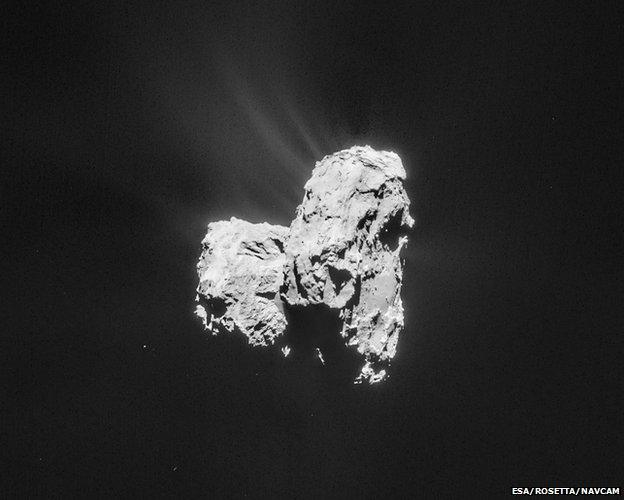
67P viewed last week from a distance just under 100km. Imhotep is the flat region at far right

Comet 67P - "Space duck" in numbers

A full rotation of the body takes just over 12.4 hours
The axis of rotation runs through the "neck" region
Its larger lobe ("body") is about 4.1 × 3.3 × 1.8 km
The smaller lobe ("head") is about 2.6 × 2.3 × 1.8 km
Gravity measurements give a mass of 10 billion tonnes
Mapping estimates the volume to be about 21.4 cubic km
The density works out at about 470kg per cubic metre
This would imply that Comet 67P is highly porous
It is 70-80% empty space, but are there big voids inside?
Daytime surface temperatures range from -93C to -43C
Amount of incident light reflected (albedo) is just 6%

Jonathan.Amos-INTERNET@bbc.co.uk and follow me on Twitter: @BBCAmos, external
- Published30 January 2015

- Published22 January 2015
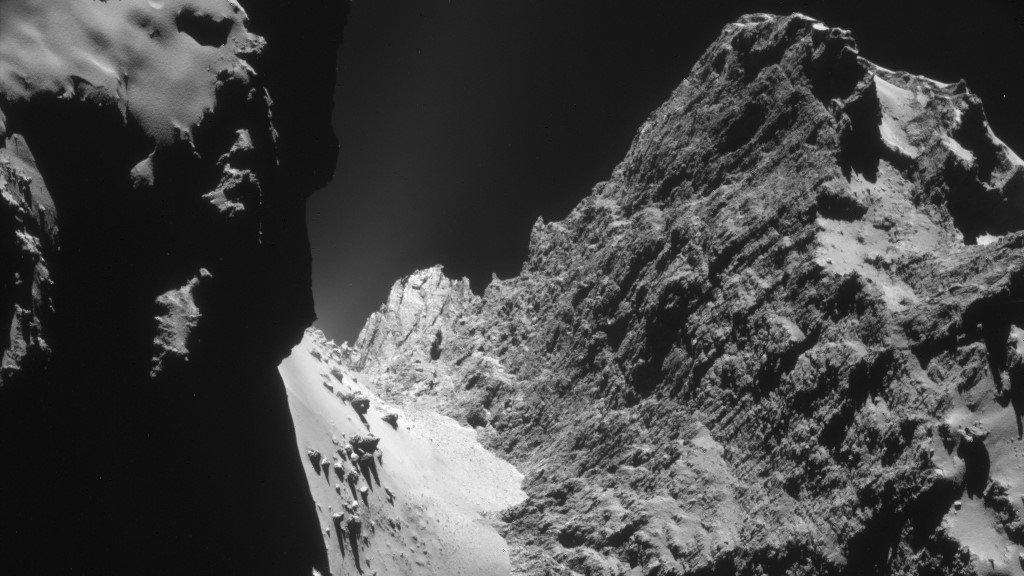
- Published12 December 2014
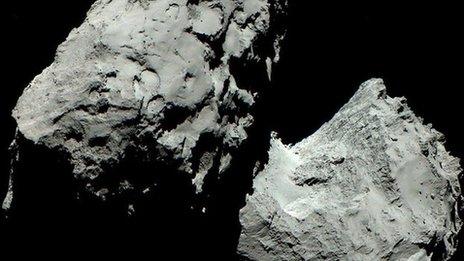
- Published10 December 2014
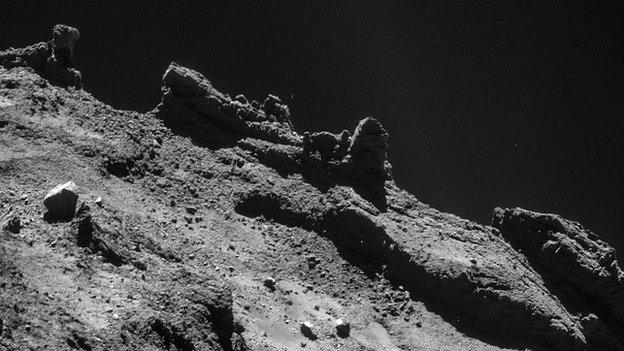
- Published18 November 2014

- Published17 December 2014

- Published17 June 2015
